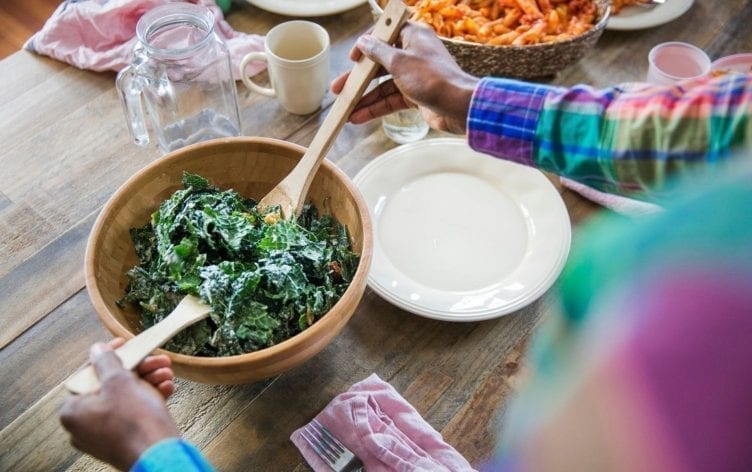
Should You Try Stoplight Foods For Weight Loss?
There are many ways you might decide what to eat when you’re trying to lose weight: You could read nutrition labels and count calories, follow a points system, or stick to a diet that tells you exactly the foods to eat and what to avoid.
The “stoplight” food system is an option if you favor the final approach on that list. “The stoplight system provides a visual guide for consumers to make food choices,” says Allison Knott, a registered dietitian specializing in sports nutrition. In general, she says, green means “go.” These are the foods you should eat regularly. Yellow foods are “sometimes” foods, and red foods should be limited (or avoided altogether).
That said, there are no universal rules for what foods should be included. For example, Sanford Fit (a program focused on healthy eating for children) considers green foods the most nutrient-rich, like fruits, veggies, whole grains and lean proteins. Yellow consists of foods that have more fat, added sugar or are more calorie-dense, like dried fruit and granola bars. Red foods are junk foods like chips and donuts.
However, other stoplight systems are specifically geared toward the calorie density of a food. That means higher fat foods could get slapped with a yellow or red label, regardless of whether it’s a healthy source of fat. For instance:
Green: Non-starchy veggies, oatmeal, quinoa, berries
Yellow: Lean protein, Greek yogurt, beans, avocado
Red: Olive oil, chia seeds, nuts
THE BENEFITS OF STOPLIGHT FOODS
First, let’s talk about the pros of the stoplight system in general. For one, it boils down nutrient info into an easy-to-understand format, says Knott. And that understanding can translate into a real diet change.
“Some studies have shown that a stoplight system can change consumer behavior by reducing the purchases of red foods and increasing the purchases of green foods. In some cases, this could mean reducing intake of added sugar, saturated fat and sodium,” says Knott. She points to a study in PLOS ONE that looked at nearly 20,000 Canadian adults and found that using a traffic light system reduced calorie consumption by 5 percent, total fat by 13 percent and sodium by 6 percent. Whether or not this translated into weight loss wasn’t analyzed.
Another study, done at a children’s hospital in San Diego, used the stoplight system to code beverages based on sugar content. Monthly sales of “red” high-sugar drinks (e.g. soda, energy and sports drinks) decreased from 56 percent of sales to 32 percent of sales, while green beverages (e.g. water, unsweetened tea and skim or low-fat milk) rose from 12 percent to 38 percent, found research in Health Promotion Practice. It’s similar to what happened when color-coded stickers were used in vending machines at a university: People bought fewer red and yellow snacks and more green ones.
Red-yellow-green labeling of foods can be pretty simple to understand versus wading through all of the claims on the front of the package and trying to decode the nutrient facts, ingredients and what they mean for your health. This system also means you’re less likely to be swayed by jargon like “keto-friendly,” “net carbs” or “natural.”
THE DRAWBACKS OF STOPLIGHT FOODS
As with many diets, there are drawbacks to the stoplight system, too. Namely, you have to understand what criteria the stoplight system you’re using is based on — and that criteria should make sense for you, your diet preferences and your goals. “Each stoplight system has different criteria for each food category. This can be confusing if you’re attempting to choose foods based on a mix of stoplight systems,” says Knott.
A certain system might not meet your individual nutrition needs, either. For instance, says Knott, if you are a vegetarian or vegan athlete, you can really use nuts and seeds to meet your nutrient needs. Seeing them labeled “red,” however would likely give you the impression that you should avoid them (when foods like these can be a good source of satiating healthy fats). And that can reinforce the idea there are generally good and bad foods, something that can affect how you view food.
If you eat a “red” food, will you then think you’ve done something “bad” simply because you wanted a handful of almonds? And how might that affect how you see certain foods in the future, long after you’ve stopped paying attention to red, yellow and green? Past research indicates guilt over food can actually promote weight gain.
THE BOTTOM LINE
All of the above is worth considering when deciding whether stoplight foods are right for you. As with any weight-loss tool, you should maintain awareness of your mental and physical health, as well as your relationship with food, along the journey. “You need flexibility depending on your individual needs If anything, the stoplight system should be used as a tool, not a rule, for choosing foods,” says Knott.
Make progress every day while you work on mini fitness and nutrition goals, like walking more steps or learning to track macros. Go to “Plans” in the MyFitnessPal app for daily coaching and easy-to-follow tasks to keep you motivated.





